
|
You entered: 3D
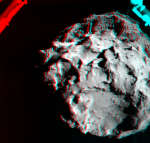 3D 67P
3D 67P
28.11.2014
Get out your red/blue glasses and float next to a comet! The Rosetta mission lander Philae's ROLIS camera snapped the two frames used to create this stereo anaglyph for 3D viewing during...
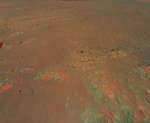 Jezero Crater: Raised Ridges in 3D
Jezero Crater: Raised Ridges in 3D
6.08.2021
Get out your red-blue glasses and hover over the surface of Mars. Taken on July 24, the 3D color view is from the Mars Ingenuity Helicopter's 10th flight above the Red Planet.
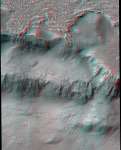 3D Lava Falls of Mars
3D Lava Falls of Mars
30.06.2017
Get out your red/cyan glasses and gaze across lava falls of Mars. The stereo anaglyph was created by combining two images recorded by the HiRISE camera onboard Mars Reconnaissance Orbiter. The multi-level falls were...
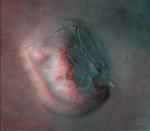 3D Face on Mars
3D Face on Mars
21.04.2007
Get out your red/blue glasses and gaze down on this weathered mesa on Mars. Of course, described as a rock formation which resembles a human head in a 1976 NASA press release, this mesa is also famous as the Face on Mars.
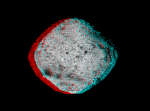 3D Bennu
3D Bennu
22.10.2021
Put on your red/blue glasses and float next to asteroid 101955 Bennu. Shaped like a spinning toy top with boulders littering its rough surface, the tiny Solar System world is about one Empire State Building (less than 500 meters) across.
 3D Bennu
3D Bennu
10.03.2023
Put on your red/blue glasses and float next to asteroid 101955 Bennu. Shaped like a spinning toy top with boulders littering its rough surface, the tiny Solar System world is about one Empire State Building (less than 500 meters) across.
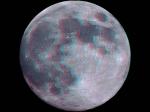 3D Full Moon
3D Full Moon
2.06.2007
Get out your red/blue glasses and check out this satisfying stereo anaglyph of the Full Moon. A corresponding stereo image pair, intended for cross-eyed viewing, is also available through this link. Regardless of your...
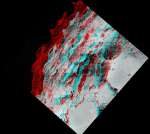 3D 67P
3D 67P
30.03.2017
Get out your red/cyan glasses and gaze across the surface of Churyumov-Gerasimenko, aka Comet 67P. The stereo anaglyph was created by combining two images from the Rosetta spacecraft's narrow angle OSIRIS camera taken on September 22, 2014.
 The Suns Surface in 3D
The Suns Surface in 3D
24.06.2003
How smooth is the Sun? The new Swedish 1-m Solar Telescope, deployed in the Canary Islands only last year, allows imaging of objects less than 100-km across on the Sun's surface. When pointed toward the Sun's edge, surface objects now begin to block each other, indicating true three-dimensional information.
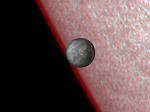 3D Mercury Transit
3D Mercury Transit
24.11.2006
Mercury is now visible shortly before dawn, the brightest "star" just above the eastern horizon. But almost two weeks ago Mercury actually crossed the face of the Sun for the second time in the 21st century.
|
January February March April May June July |
|||||||||||||||||||||||||||||||||||||||||||||||||